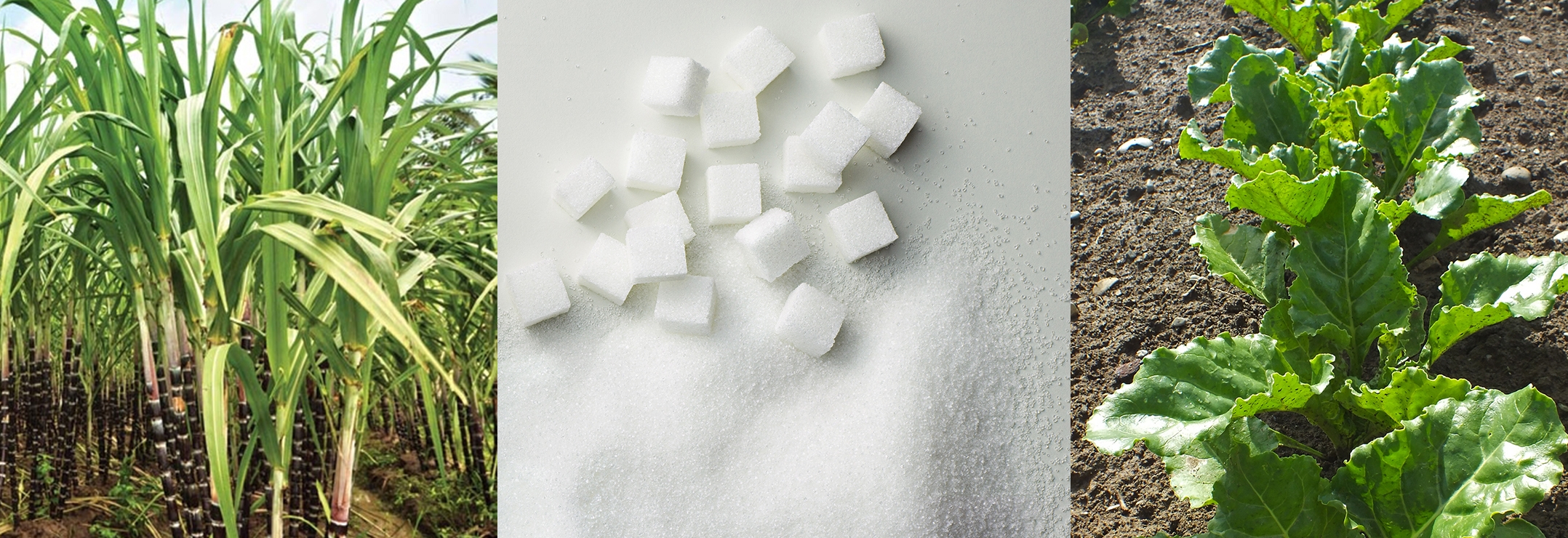Discovering Beet Sugar Vs Cane: Nutritional Conveniences and Culinary Uses
The comparison between beet sugar and walking stick sugar extends beyond mere preference and structure, revealing intricate dietary accounts and cooking applications that warrant cautious exam. As we explore the nuances of these 2 sugars, it comes to be clear that the ramifications of their use are much more extensive than one could at first presume.
Review of Beetroot Sugar
Although both beetroot sugar and cane sugar offer comparable features in cooking applications, beet sugar is acquired specifically from the sugar beet plant (Beta vulgaris), an origin veggie grown in temperate climates. This process starts with the harvesting of sugar beetroots, which are after that washed, sliced, and based on extraction methods to yield sugar-rich juice (beet sugar vs cane). The juice undertakes purification and crystallization, leading to the granulated sugar commonly used in families and markets
Nutritionally, beet sugar is chemically identical to walking cane sugar, both mainly including sucrose. Beet sugar manufacturing tends to have a reduced ecological impact, as sugar beetroots require much less water and can be grown in diverse farming conditions. Furthermore, the farming of sugar beets can add to plant rotation techniques, improving dirt health and wellness.
Beet sugar usually includes trace amounts of minerals and vitamins, consisting of calcium and potassium, although these are minimal in typical usage. In cooking and baking, beet sugar carries out equivalently to its cane equivalent, making it a functional sugar. Its neutral taste profile permits it to be effortlessly incorporated right into various dishes without altering the desired preference of the final item.
Introduction of Walking Stick Sugar
Walking stick sugar, acquired from the sugarcane plant (Saccharum officinarum), makes up about 70% of worldwide sugar manufacturing. This versatile sugar is cultivated in subtropical and exotic regions, with major producers consisting of Brazil, India, and China. The removal process involves crushing the sugarcane stalks to launch the juice, which is then made clear, vaporized, and taken shape to generate raw walking cane sugar.
Walking cane sugar is characterized by its penalty, white granules and is frequently located in both granulated and powdered types. Its flavor profile is often referred to as sweet and tidy, making it suitable for a variety of cooking applications, from cooking and baking to sweetening beverages.
Along with its culinary uses, walking cane sugar likewise works as a chemical in jams and jellies, as well as a fermentation agent in the production of alcoholic beverages. The sugar is typically processed right into different items, including molasses, brownish sugar, and fluid sugar, each offering one-of-a-kind qualities that can enhance different recipes. On the whole, walking cane sugar remains a staple active ingredient in cooking areas all over the world, highlighting its relevance in both cooking practices and contemporary gastronomy.
Nutritional Contrast
When comparing beet sugar and walking cane sugar, it is important to assess their dietary accounts to understand their influence on health. Both sorts of sugar are largely composed of sucrose, which is a disaccharide made up of glucose and fructose. This suggests that, in regards to calorie content, they are virtually the same, providing roughly 16 calories per tsp.
However, there are subtle differences in their processing and mineral web content. Beetroot sugar is commonly processed using bone char, which may not be appropriate for vegetarians and vegans, while cane sugar can be extra straightforwardly improved. In regards to trace minerals, cane sugar may maintain slightly extra calcium, potassium, and magnesium because of less comprehensive processing, though these quantities are negligible contrasted to day-to-day advised intakes.
Additionally, both sugars add to the exact same health and wellness threats when consumed in too much quantities, such as excessive weight, type 2 diabetic issues, and oral problems. Eventually, the selection between beetroot and walking stick sugar may hinge extra on personal preference or nutritional constraints instead of considerable distinctions in nutritional value. Comprehending these nuances can assist customers in making notified nutritional choices.

Culinary Utilizes of Beet Sugar
Beetroot sugar, a flexible sweetener originated from sugar beets, finds numerous applications in cooking methods - beet sugar vs cane. Its fine-tuned crystals liquify easily, making it an ideal component for cooking, food preparation, and drink prep work. In view it the world of cooking, beet sugar adds to moisture retention and browning, improving the structure and taste of cookies, breads, and cakes
Moreover, its neutral taste account permits it to mix seamlessly right into various dishes without overpowering various other ingredients, making it ideal for both wonderful and tasty dishes. Beetroot sugar can likewise be used in dressings, marinades, and sauces, where it balances acidity and enriches the overall taste.
In drinks, beet sugar is typically made use of to sweeten tea, coffee, and alcoholic drinks, providing a constant sweetness that matches diverse taste accounts (beet sugar vs cane). Furthermore, it acts as a chemical in jellies and jams, guaranteeing a stable product with improved life span
Culinary Utilizes of Cane Sugar
Sweet taste is a basic facet of several culinary creations, and walking stick sugar plays a vital role in Resources achieving that balance. Its one-of-a-kind chemical composition enables it to dissolve conveniently, making it perfect for a variety of applications, from baking to beverages. Walking stick sugar boosts tastes in desserts, offering the sweetness crucial for pastries, cookies, and cakes. It not just adds to taste but additionally impacts texture; as an example, it aids in wetness retention, leading to softer baked products.
In savory dishes, walking stick sugar can stabilize acidity and resentment, enhancing the total flavor account. It is frequently made use of in sauces and marinates, where it assists to develop a harmonious mix of pleasant, salted, and umami notes. Furthermore, walking cane sugar is a key ingredient in maintaining fruits, as it acts as a natural chemical, hindering microbial development.
In beverages, cane sugar is commonly liked for sweetening teas, mixed drinks, and sodas, enabling a clean, pure sweet taste. Its convenience makes it a staple in both home kitchen areas and specialist cooking settings, showcasing its importance in attaining cooking excellence.
Conclusion

The comparison in between beet sugar and walking stick sugar expands beyond simple preference and structure, revealing intricate nutritional accounts and culinary applications that warrant mindful assessment.Although both beet sugar and cane sugar offer comparable functions in cooking applications, beet sugar is acquired especially from the sugar beet plant recommended you read (Beta vulgaris), an origin vegetable cultivated in temperate environments. Beet sugar manufacturing has a tendency to have a lower environmental impact, as sugar beetroots call for less water and can be expanded in diverse farming problems. The sugar is frequently refined into numerous items, consisting of molasses, brownish sugar, and fluid sugar, each offering one-of-a-kind attributes that can boost different recipes.Beetroot sugar, a flexible sugar obtained from sugar beetroots, locates numerous applications in cooking techniques.